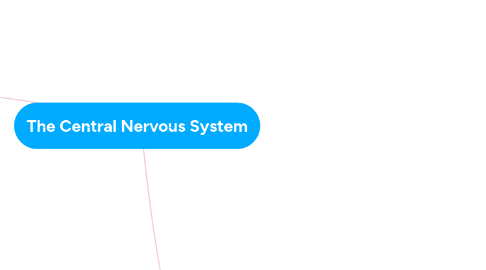
1. The Brain
1.1. Brain Stem
1.1.1. Midbrain
1.1.2. Pons
1.1.3. Medulla Oblongata
1.2. Limbic system
1.2.1. Amygdala
1.3. Cerebrum
1.3.1. Corpus Callosum
1.3.2. Hemispheres
1.3.2.1. Left
1.3.2.2. Right
1.3.3. Layers of Cerebrum
1.3.3.1. Grey Matter: The Cerebral Cortex
1.3.3.2. White Matter
1.3.4. Lobes
1.3.4.1. Frontal Lobe
1.3.4.2. Temporal Lobe
1.3.4.3. Parietal Lobe
1.3.4.4. Occipital Lobe
1.4. Cerebellum
1.5. Cells
1.5.1. Stem Cells: Create new neurons throughout life
1.6. Thalmus and Hypothalmus
2. Thoughts, plans, and learning
3. Leaving Brain
4. The Body
4.1. Right Side
4.2. Left Side
5. Sensory Information Processing
6. Connecting different parts of the brain
7. Emotions, behavior, memory, emotional learning, fear, anxiety, pleasure
8. Directing Information to Appropriate Location
9. Hunger, thirst, fatigue, anger, body temperature, nervous and endocrine system coordination
10. Coordinating and balancing Muscles, "muscle memory"
11. Regulating information flow between brain and spinal cord, controlling breathing, blood pressure, heart rate, and swallowing
12. The Spinal Cord
12.1. Spinal nerves (31 pairs)
12.2. Spinal Reflexes
13. Addiction and the Brain
13.1. Effects
13.1.1. Modifies Behavior
13.1.2. Affects synapses related to pleasure and rewards
13.1.3. Pleasurable sensations caused by drugs that:
13.1.3.1. Directly cause dopamine to be released (methamphetamine)
13.1.3.2. Inhibit reuptake of dopamine (cocaine)
13.1.3.3. Stimulate receptors to release dopamine (opium poppy drugs such as heroin)
13.1.4. Reduction of number and density of dopamine receptors, which reduces feelings of pleasure (shown on PET scans)
13.2. Examples of Addictive Drugs
13.2.1. Heroin
13.2.2. Methamphetamine
13.2.3. Cocaine
13.2.4. Tobacco
13.2.5. Alcohol

